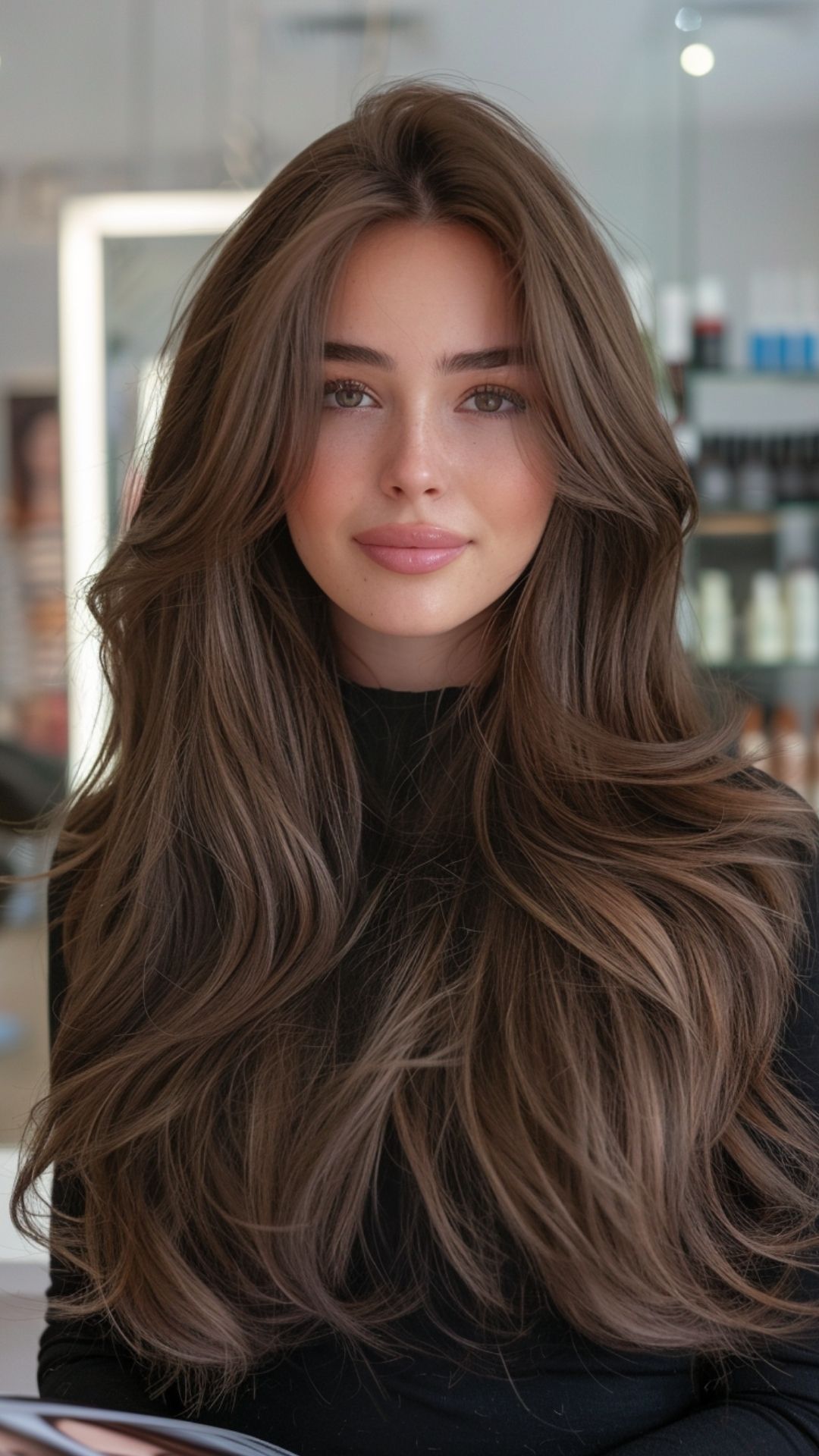The hair salon industry, often seen as a cornerstone of personal care and self-expression, is far more dynamic and complex than a simple cut and color. It’s a vibrant ecosystem constantly evolving at the intersection of artistry, technology, sustainability, and shifting consumer behaviors. From bustling urban centers to serene suburban locales, hair salons are adapting, innovating, and redefining their role in the modern world. This article delves into the significant news and trends shaping the hair salon industry today, highlighting its resilience, revolutionary spirit, and promising future.
I. The Post-Pandemic Landscape: Resilience and Redefinition
The COVID-19 pandemic undoubtedly presented the hair salon industry with unprecedented challenges, from forced closures to stringent hygiene protocols. However, rather than collapsing, the industry demonstrated remarkable resilience and adaptability.
1. Enhanced Hygiene and Safety Standards: The immediate aftermath saw a permanent shift towards elevated hygiene. Appointment-only models, staggered scheduling, increased sanitation of tools and stations, and often, mask mandates became standard. This instilled greater client confidence and, in many cases, streamlined operations, reducing waiting times and improving personalized attention.
2. Digital Transformation Accelerated: While many salons had rudimentary online booking, the pandemic supercharged their digital presence. Virtual consultations became a way to maintain client connection and plan services. Robust online booking platforms, contactless payment systems, and sophisticated client relationship management (CRM) software moved from optional luxuries to essential tools.
3. Focus on Wellness and Self-Care: With increased stress and anxiety during lockdowns, the value of self-care soared. Salons capitalized on this by expanding their offerings beyond just hair, incorporating scalp treatments, hair health assessments, and even mindfulness elements into the salon experience, positioning themselves as havens for holistic well-being.
II. Technological Integration: Smart Salons on the Rise
Technology is no longer just for booking appointments; it’s becoming integral to the salon experience itself, enhancing precision, personalization, and efficiency.
1. Augmented Reality (AR) and Artificial Intelligence (AI):
- AR Try-Ons: Apps and smart mirrors now allow clients to virtually try on different hair colors and styles before committing, significantly reducing client anxiety and increasing satisfaction. This technology helps bridge the gap between imagination and reality.
- AI Diagnostics: AI-powered tools can analyze hair and scalp health, identifying issues like dryness, damage, or thinning, and recommending personalized treatment plans and product regimens. This offers a scientific approach to hair care, elevating the stylist’s consultation process.
2. Advanced Booking and CRM Systems: Modern software goes beyond simple scheduling. It integrates client history, preferences, allergies, past services, and product purchases. This data allows stylists to offer highly personalized recommendations and anticipate client needs, fostering deeper relationships and loyalty. Push notifications for appointments, birthday greetings, and personalized promotions are now commonplace.
3. Smart Tools and Equipment: From intelligent hair dryers that adjust heat based on hair type to precision cutting tools with integrated sensors, salon equipment is becoming smarter. These innovations aim to improve service quality, reduce styling time, and minimize damage.
III. The Green Revolution: Sustainability Takes Center Stage
As environmental consciousness grows globally, the hair salon industry is embracing sustainability, driven by both consumer demand and a genuine commitment to ecological responsibility.
1. Eco-Friendly Products and Brands: There’s a significant shift towards "clean beauty" products that are vegan, cruelty-free, free from harsh chemicals (sulfates, parabens, phthalates), and sourced ethically. Salons are actively seeking out and promoting brands with strong environmental credentials.
2. Waste Reduction and Recycling Programs: Salons are notoriously high-waste environments. Innovative programs are emerging to address this:
- Hair Recycling: Initiatives like "Green Circle Salons" collect hair clippings, color tubes, foils, and even chemical waste, diverting them from landfills. Hair can be used for oil spill cleanups, compost, or even bioplastics.
- Water Conservation: Low-flow showerheads, water-saving washing techniques, and advanced water filtration systems are being implemented to reduce water consumption.
- Refill Programs: Clients can bring back empty product bottles to be refilled, reducing plastic waste.
3. Energy Efficiency and Sustainable Design: Many new or renovated salons are incorporating energy-efficient lighting (LEDs), natural ventilation, and sourcing sustainable materials for interiors. Some are even investing in renewable energy sources. This not only reduces their carbon footprint but can also lead to long-term cost savings.
IV. Personalization and Hyper-Customization: The Client-Centric Approach
Gone are the days of one-size-fits-all services. Modern clients expect bespoke experiences tailored to their unique needs and desires.
1. Data-Driven Consultations: Utilizing the data gathered from CRM systems and AI diagnostics, stylists can offer highly personalized recommendations for cuts, colors, and treatments. This includes considering hair type, texture, lifestyle, and desired maintenance level.
2. Custom Color and Treatment Formulations: Brands are offering customizable color lines and treatments that can be mixed on-site to perfectly match a client’s specific hair needs and desired outcome. This ensures truly unique results that cannot be replicated with off-the-shelf products.
3. Specialized Services: The demand for highly specialized services continues to grow. This includes expertise in textured hair (curly, coily, kinky), hair extensions, trichology (the science of hair and scalp), and even niche services like "silent appointments" for clients seeking a quieter, more reflective experience.
V. The Evolving Workforce: Attracting and Retaining Talent
The hair salon industry faces ongoing challenges in attracting, training, and retaining skilled professionals. News in this area often focuses on improving working conditions and career paths.
1. Education and Skill Development: The rapid evolution of techniques and technologies necessitates continuous education. Salons are investing in advanced training for their staff, covering everything from cutting-edge coloring methods to the use of new digital tools and sustainable practices. Partnerships with beauty schools and brand educators are crucial.
2. Compensation and Benefits: To combat labor shortages and high turnover, many salons are rethinking compensation models, moving towards more competitive salaries, commission structures, and even offering benefits like health insurance, retirement plans, and paid time off.
3. Work-Life Balance and Well-being: There’s a growing recognition of the demanding nature of salon work. Initiatives to promote better work-life balance, mental health support, and a positive salon culture are gaining traction, aiming to create a more sustainable career path for stylists.
VI. Business Model Innovations: Beyond the Traditional Salon
The traditional brick-and-mortar salon model is being augmented by new approaches.
1. Salon Suites and Co-working Spaces: These models offer independent stylists the flexibility to run their own businesses without the overhead of a full salon, providing a professional space and shared amenities. This empowers stylists and fosters entrepreneurship.
2. Mobile and On-Demand Services: Apps and platforms connecting clients with stylists who offer home visits are growing in popularity, catering to busy individuals or those with mobility challenges.
3. Subscription and Membership Models: Some salons are introducing subscription services for regular blowouts, treatments, or product discounts, creating recurring revenue and fostering client loyalty.
4. Hybrid Retail Experiences: Salons are increasingly integrating curated retail sections, offering high-quality products that complement their services. Many are also expanding into e-commerce, allowing clients to purchase products online after their visit.
VII. Challenges and Opportunities Ahead
Despite the positive momentum, the industry faces ongoing challenges:
- Labor Shortages: Attracting and retaining qualified stylists remains a significant hurdle.
- Rising Costs: Inflation impacts product costs, rent, and utilities, squeezing profit margins.
- Intense Competition: The proliferation of salons, independent stylists, and beauty service apps creates a highly competitive market.
- Adapting to Rapid Change: Keeping up with technological advancements and shifting consumer trends requires continuous investment and learning.
However, these challenges also present opportunities:
- Niche Market Specialization: Focusing on specific hair types, services (e.g., extensions, color correction), or client demographics can carve out a loyal customer base.
- Leveraging Technology: Early adopters of cutting-edge tech can gain a significant competitive advantage.
- Strong Brand Identity: Developing a unique brand story, exceptional customer service, and a distinct salon atmosphere can differentiate a business.
- Community Engagement: Becoming a hub for local beauty and wellness, hosting events, and participating in community initiatives can build strong client relationships.
Conclusion: A Future Woven with Innovation and Connection
The hair salon industry is currently experiencing a profound transformation, moving beyond its traditional role to become a sophisticated blend of artistry, technology, and conscious consumerism. The news from this sector points towards a future where salons are not just places for aesthetic enhancement, but integrated wellness hubs, technological pioneers, and bastions of sustainability.
The emphasis on personalized experiences, ethical practices, and the strategic adoption of digital tools underscores an industry that is both resilient and revolutionary. As it navigates the complexities of the modern world, the hair salon industry continues to demonstrate its vital importance, weaving together the strands of innovation and human connection to create a truly vibrant and enduring tapestry.

